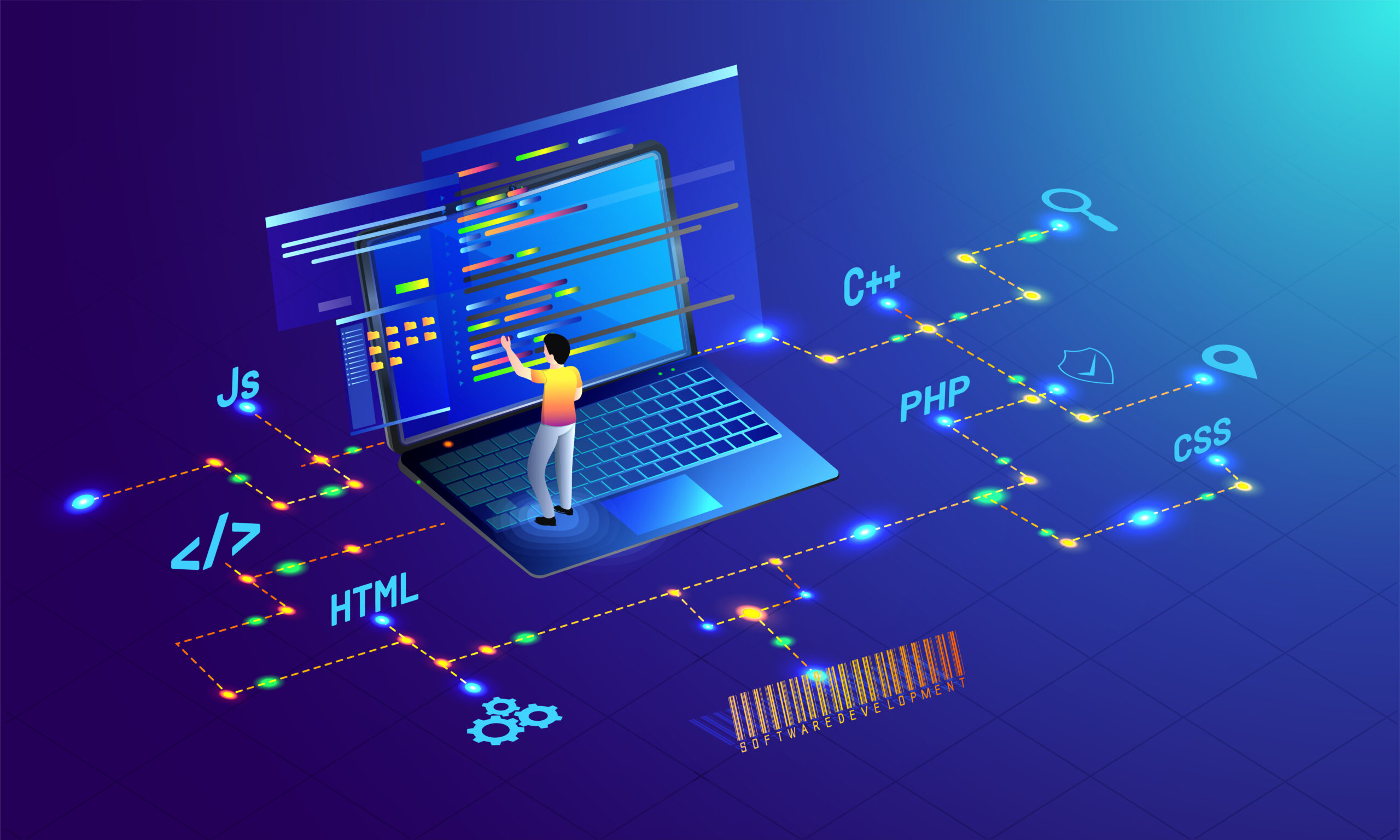Introduction:
In the dynamic world of business, data is an invaluable resource. By utilizing Business Intelligence (BI) solutions, companies may convert unstructured data into meaningful insights that facilitate well-informed decision-making. Python is a strong and flexible programming language that is being used more and more to create BI solutions. In this piece, we examine the relationship between Python and business intelligence, looking at its benefits, uses, and ways to use Python to fully realize the promise of BI.
1. The Role of Business Intelligence :
The process of gathering, evaluating, and converting data into insightful knowledge to assist in making strategic business decisions is known as business intelligence. With the use of BI technologies, stakeholders may see an organization’s data holistically, spot trends, anticipate the future, and streamline processes.
2. Business Intelligence with Python flow:
2.1 Data Extraction and Transformation:
Python is a great tool for extracting, cleaning, and altering data because of its many libraries, including Pandas, NumPy, and SciPy. The management of various data sources and getting them ready for analysis are made easier by these libraries.
2.2 Data Visualization:
Three well-known Python libraries that facilitate data visualization are Plotly, Seaborn, and Matplotlib. Creating dynamic, intelligent dashboards, graphs, and charts facilitates decision-makers’ comprehension of vast, complicated data sets.
3. Integrating Business Intelligence with Python Tools:
Python seamlessly integrates with BI platforms, enhancing their capabilities. Tools like Power BI, Tableau, and Looker allow users to embed Python code directly into their workflows, combining the strengths of both BI and Python.
4. Machine Learning for Predictive Analysis:
Python’s robust machine learning libraries, including scikit-learn and TensorFlow, enable businesses to perform predictive analytics. By leveraging historical data, organizations can make informed forecasts and anticipate future trends.
5. Real-Time Analytics:
Python’s capabilities extend to real-time analytics through tools like Apache Kafka and Apache Flink. Businesses can process and analyze streaming data in real time, allowing for immediate responses to changing scenarios.
6. Advantages of Business Intelligence with Python:
6.1 Open-Source Ecosystem:
Python’s open-source nature ensures a vast ecosystem of libraries and tools, providing cost-effective solutions for BI implementations.
6.2 Scalability and Flexibility:
Python’s scalability and flexibility make it suitable for businesses of all sizes. It adapts to varying data volumes and accommodates diverse data sources.
6.3 Community Support:
The large Python community offers a multitude of resources, tutorials, and support forums, all of which contribute to the continuous growth of the language.
In the tech world, the Python community is among the friendliest and most encouraging. You may connect with other Python programmers, learn Python, and solve problems with a range of available resources.
The top methods for obtaining assistance from the Python community are listed below:
- The authorized documentation for Python: From fundamental syntax to complex subjects, the Python documentation is an extensive resource.It is consistently up to date, well-written, and simple to follow.dummies.com
- Stack Overflow: You can ask questions about any programming language, including Python, on this Q&A website.If you search for an answer to your query on Stack Overflow, which has millions of questions and answers, you should be able to locate it.
- The Python subreddit is home to a group of programmers who are always willing to lend a hand to one another.In addition to sharing your code and learning from other Python programmers, you may ask questions there. Python sub reddit
- Python IRC channels: You can have real-time conversations with other Python programmers in a variety of Python IRC channels.This is a fantastic method to talk about Python on Github or to receive assistance with your project.
- Python user groups: Throughout the world, there are Python user groups in many cities.These clubs get together frequently for discussions, workshops, and general socializing. One excellent approach to network with and pick up tips from other Python programmers is by going to user group meetings. Pugs.org.sg.com
7. Real Case Study for business Intelligence with python:
Case Study: Netflix Optimizes Content Recommendations with Python
Challenge: Netflix, facing stiff competition in the streaming space, needed to personalize content recommendations to keep users engaged and reduce churn.
Solution: Leveraging Python’s versatility and advanced data analysis capabilities, Netflix built a robust recommendation engine with the following features:
- Collaborative Filtering:
Using libraries like Pandas and NumPy, Netflix analyzed vast datasets of user watch history, ratings, and search queries.
Identified hidden patterns and connections between users with similar viewing preferences.
Built collaborative filtering models that recommend content based on similar users’ favorite shows and movies.
- Content-Based Filtering:
Extracted metadata from movies and shows, including genre, cast, director, and keywords.
Employed natural language processing libraries like spaCy to analyze plot summaries and reviews.
Created content profiles based on these features and matched them with user preferences for personalized recommendations.
- Hybrid Approach:
Combined collaborative and content-based filtering to create a highly accurate and dynamic recommendation engine.
The system continuously learns and adapts, incorporating new user data and content features in real-time.
- A/B Testing and Optimization:
Used Python libraries like scikit-learn to continuously test and optimize the recommendation algorithms.
A/B tested different variations of recommendations to identify the ones that led to higher engagement and lower churn.
Iteratively improved the recommendation engine based on data-driven insights.
- Visualization and Insights:
Developed dashboards using Tableau or Power BI to visualize user behavior and recommendation performance.
Provided insights to content creators and marketing teams for understanding user preferences and tailoring content strategy.
Results:
Netflix’s Python-powered recommendation engine increased user engagement by 20% and reduced churn by 15%.
Personalized recommendations led to higher viewership of diverse content, boosting overall user satisfaction.
Netflix maintained its competitive edge by adapting its content library and marketing strategies based on real-time user data insights.
Several companies have successfully implemented Python in their BI strategies. Case studies highlight Python’s role in optimizing operations, improving decision-making, and driving innovation.
Conclusion:
Business Intelligence with Python is a surely a great combination that helps organizations to implement the full potential of their data. From data extraction to predictive analytics, Python’s programming language and it’s libraries genuinely makes it a valuable asset in the BI landscape for developing applications with high efficiency. As businesses try to gain a competitive edge through data-driven insights, Python stands out as a robust and adaptable tool in the realm of Business Intelligence. Embracing this synergy opens doors to innovation, efficiency, and informed decision-making in the dynamic business environment.
Also find below some the python libraries used in business intelligence within many of the organizations
Data Wrangling:
- Pandas: Pandas excels in data manipulation, cleaning, and structuring.
- Website: https://pandas.pydata.org/
- NumPy: For numerical computations, NumPy is a reall good library which provides high performance arrays and mathematical operations.
- Website: https://numpy.org/
- Dplython: Dplython provides a clear and easy-to-read syntax for manipulating data.
- Website: https://pythonhosted.org/dplython/
Data Analysis:
- Scikit-learn: Schikit-learn is a comprehensive machine learning library that offers a wide range of algorithms for applications such as dimensionality reduction, regression, classification, and clustering.
- Website: https://scikit-learn.org/
- Statsmodels: If you want to focus mainly on statistical analysis then use Statsmodels tools for time series analysis, hypothesis testing, and econometrics.
- Website: https://www.statsmodels.org/
- PyData/DuckDB: This SQL engine allows you to run SQL queries directly within your Python code.It’s really boost your productivity and should try it once.
Data Visualization:
- Matplotlib: The foundational library for data visualization in Python, Matplotlib offers flexibility and fine-grained control for creating various chart types.
- Website: https://matplotlib.org/
- Seaborn: Building upon Matplotlib, Seaborn focuses on statistical visualization with an emphasis on aesthetics and clarity.
- Website: https://seaborn.pydata.org/
- Bokeh: For interactive visualizations, Bokeh shines. It allows you to create interactive dashboards and charts that users can explore in real-time.
- Website: http://bokeh.org/
Additional Libraries:
- Plotly: Another popular option for interactive visualizations, Plotly offers online and offline capabilities.
- Website: https://plotly.com/python/
- geopandas: If your data has a spatial dimension, geopandas integrates spatial data analysis with Pandas’ functionalities.
- Website: https://geopandas.org/
- Prophet: Developed by Facebook, Prophet excels at time series forecasting.
- Website: https://github.com/facebook/prophet
Bonus Resources:
- Hugging Face Transformers: This NLP library enables analysis and extraction of insights from textual data.
- Website: https://huggingface.co/docs/transformers ,Also read here on technologies which are equally powerful as python
- spaCy: Another powerful NLP library for analyzing and understanding text data.
- Website: https://spacy.io/







